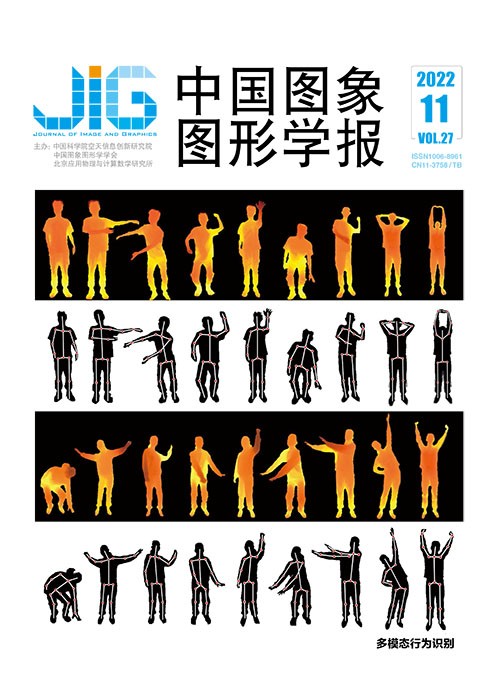
检测器和分类器级联的飞机发动机损伤检测
摘 要
目的 基于深度学习的飞机发动机损伤检测是计算机视觉中的一个新问题。当前的目标检测方法没有考虑飞机发动机损伤检测问题的特殊性,将其直接用于发动机损伤检测的效果较差,无法满足实际使用的要求。为了提高损伤检测的精度,提出检测器和分类器级联的发动机损伤检测方法:Cascade-YOLO (cascade-you only look once)。方法 首先,将损伤区域作为正例、正常区域作为负例,训练损伤检测网络,初始化特征提取网络的网络参数;其次,固定特征提取网络,使用多个检测头分别检测不同类型的发动机损伤,每个检测头独立进行检测,从而提高单类别损伤的检测召回率;最后,对于置信度在一定范围内的损伤,训练一个多分类判别器,用于校正检测头输出的损伤类别。基于检测结果,利用语义分割分支可以准确分割出损伤区域。结果 构建了一个具有1 305幅且包含9种损伤类型的孔探图像数据集,并在该数据集上量化、对比了6个先进的目标检测方法。本文方法的平均精确率(mean average precision,MAP)、准确率、召回率相比单阶段检测器YOLO v5分别提高了2.49%、12.59%和12.46%。结论 本文提出的检测器和分类器级联的发动机损伤检测模型通过对每类缺陷针对性地训练单独的检测头,充分考虑了不同缺陷间的分布差异,在提高召回率的同时提升了检测精度。同时该模型易于扩展类别,并可以快速应用于分割任务,符合实际的应用需求。
关键词
Detector and classifier cascaded aero-engine detection method
Huang Rui1, Duan Bokun1, Chen Wang2, Ye Qingchi2, Peng Hongjian2, Ma Xiaowen2, Fan Wei1(1.School of Computer Science and Technology, Civil Aviation University of China, Tianjin 300300, China;2.Xiamen Airlines Co., Ltd., Xiamen 361006, China) Abstract
Objective The healthy issue of aero-engine is threatened due to high temperature and extreme pressure environment in common. The commonly-used manual inspection method for damage detection is very labor-intensive. Therefore, a high detection accuracy-based computer vision algorithm is cost-effective to detect aero-engine status automatically. The existing bore-scope image damage detection methods are divided into two categories:traditional manual-based and deep learning-based. Traditional detection methods are focused on edge detection or filter detection-like image processing for crack or burn detection. Although traditional methods perform well on simple scenes, they cannot generalize well on the complex images like the erosion and oil contamination-derived regions, and it cannot be extended to the other damages like nick and dent. Most aero-engine damage detection methods are based on deep learning technique to resilient designing features and tuning parameters of traditional methods. Multi-objects detection methods like single shot multibox detector(SSD), you only look once(YOLO) series models are used to detect different damages. However, most of the deep learning-based aero-engine detection methods do not concern about the detection of multiple types of damage in the same region and the low differentiation of damage in the evolution process, which is a limiting factor for the existing state-of-the-art object detectors. To improve the accuracy of detection, we develop an aero-engine damage-oriented detection method via the cascade detector and classifier (Cascade-YOLO). Cascade-YOLO is used to train independent damage detector for each type of damage, which can fully develop the detector of other types of similar damage excluded. Furthermore, a classifier is adopted to modify damage labels after detecting the damages, which is trained with all types of damages. Method Our YOLO v5-originated cascade-YOLO is developed on object detection benchmarks. There are mainly two differences between Cascade-YOLO and YOLO v5. The first one is that Cascade-YOLO has multiple detection heads for various types of damage detection. The second one is that a multi-class classifier is used to correct damage label in Cascade-YOLO. Specifically, a YOLO v5-based damage detection network is trained by seeing all types' damages as target objects. As the parameters of our backbone network, the parameters of this pre-trained network are used for feature extraction. Thus, the extracted features are suitable for representing all kinds of damages. All parameters of the backbone network are fixed in latter training. Our multiple damage detection heads is employed to extract features based on the backbone network. Each damage detection head is responsible for detecting a single type of damage, which can fully explore the discrimination ability of different types of damages and increase the recall of single type of damage. However, multiple detection heads may fail to classify the damage into correct damage category. To modify the detected label, we adopt a cascade manner via a multi-class classifier after the multi-head detector. We can segment the damage using a modified semantic segmentation method. Result We build a bore-scope image dataset with 1 305 images in the context of nine different types of damages, and evaluate six state-of-the-art one-stage object detectors (e.g., single shot multibox detector(SSD), object detector based on multi-level feature pyramid network(M2Det) and YOLO v5) and two-stage object detectors (e.g., region convolutional neural network(Mask R-CNN) and BMask R-CNN) on this dataset. The mean average precision(MAP) of Cascade-YOLO is higher than that of YOLO v5 by 2.49%, and is higher than that of Mask R-CNN by 3.3%. The accuracy and recall of Cascade-YOLO are higher than those of YOLO v5 by 12.59% and 12.46%, respectively. Conclusion Our cascade detector and classifier-based aero-engine damage detection is developed in terms of the tailored bore-scope image. The recall of the damage detection can be increased using a single type damage-oriented independent detection head. The integrated multiple detection heads can detect multiple types of damage. Multiple detection heads share a feature extraction backbone network, which improves the detection efficiency. We adopt a multi-class classifier to correct the labels of the detected damages that having low confidence. Furthermore, we also employ a clear modified semantic segmentation method to segment the damage region. The experiment results show that Cascade-YOLO performances can be qualified for various types of damage detection problem. The Cascade-YOLO is optimized in detection precision, recall and accuracy compared to YOLO v5 and Mask R-CNN. The potential independent detection head method is feasible for the extended damages detection.
Keywords
|



 中国图象图形学报 │ 京ICP备05080539号-4 │ 本系统由
中国图象图形学报 │ 京ICP备05080539号-4 │ 本系统由